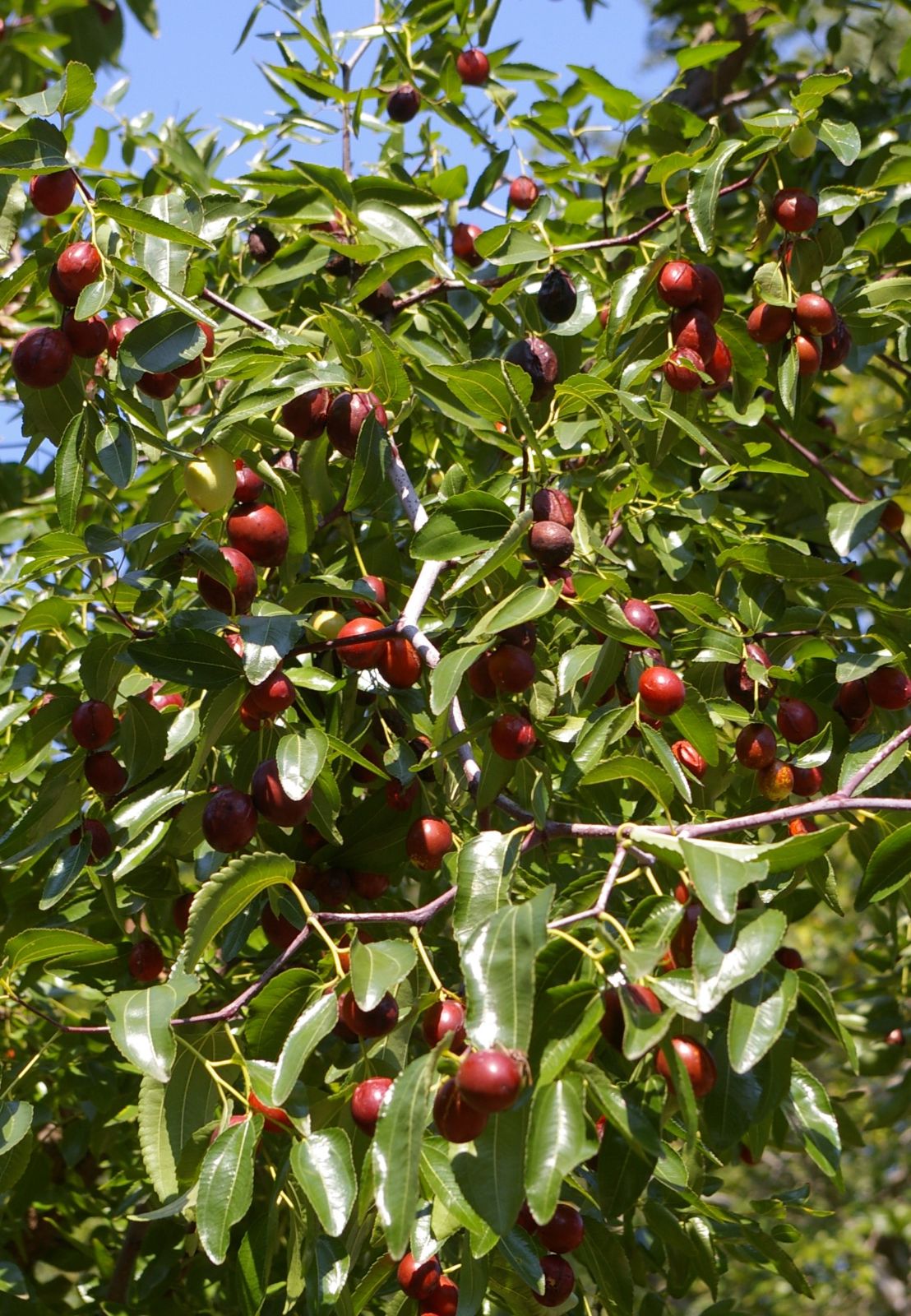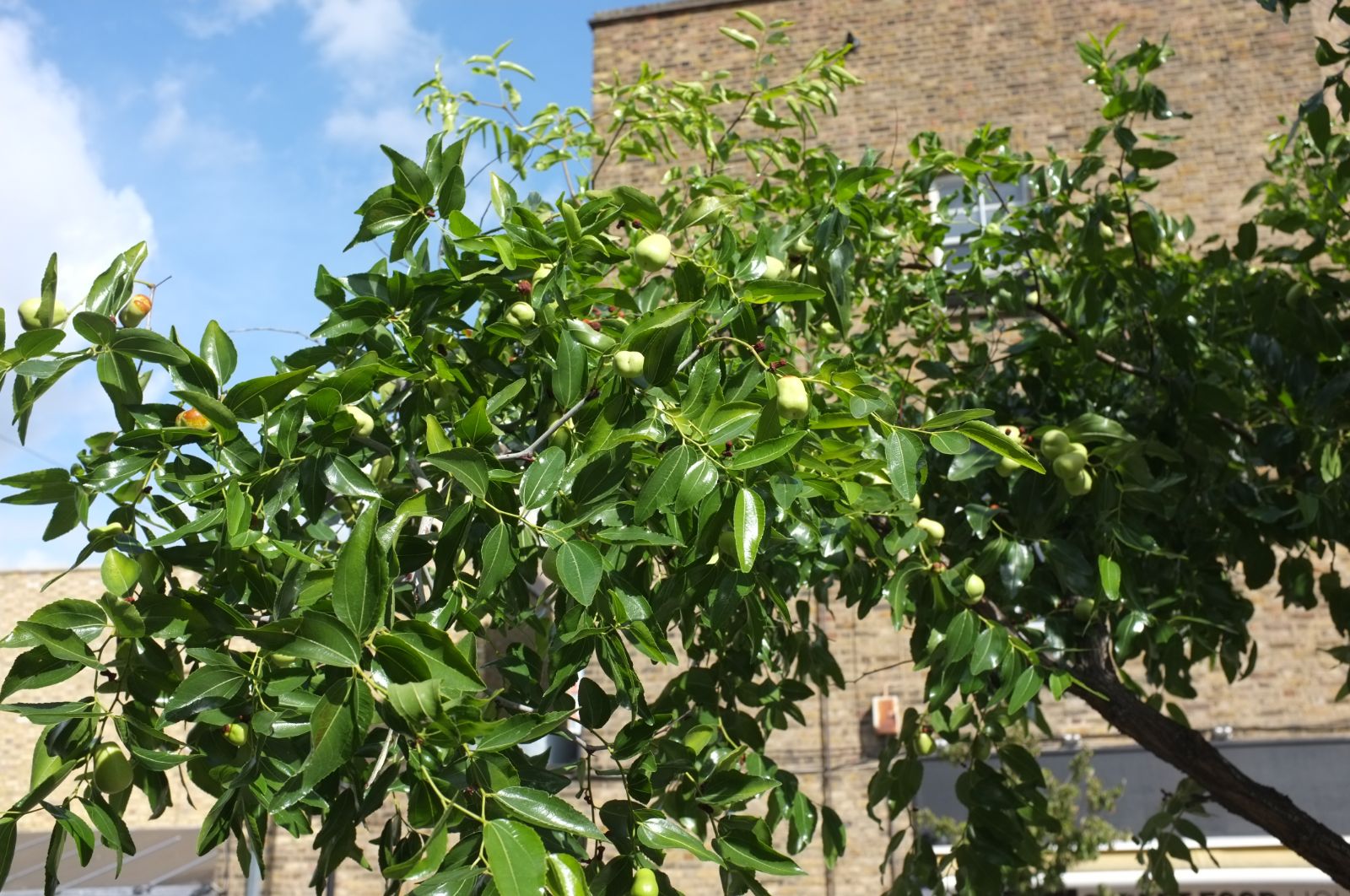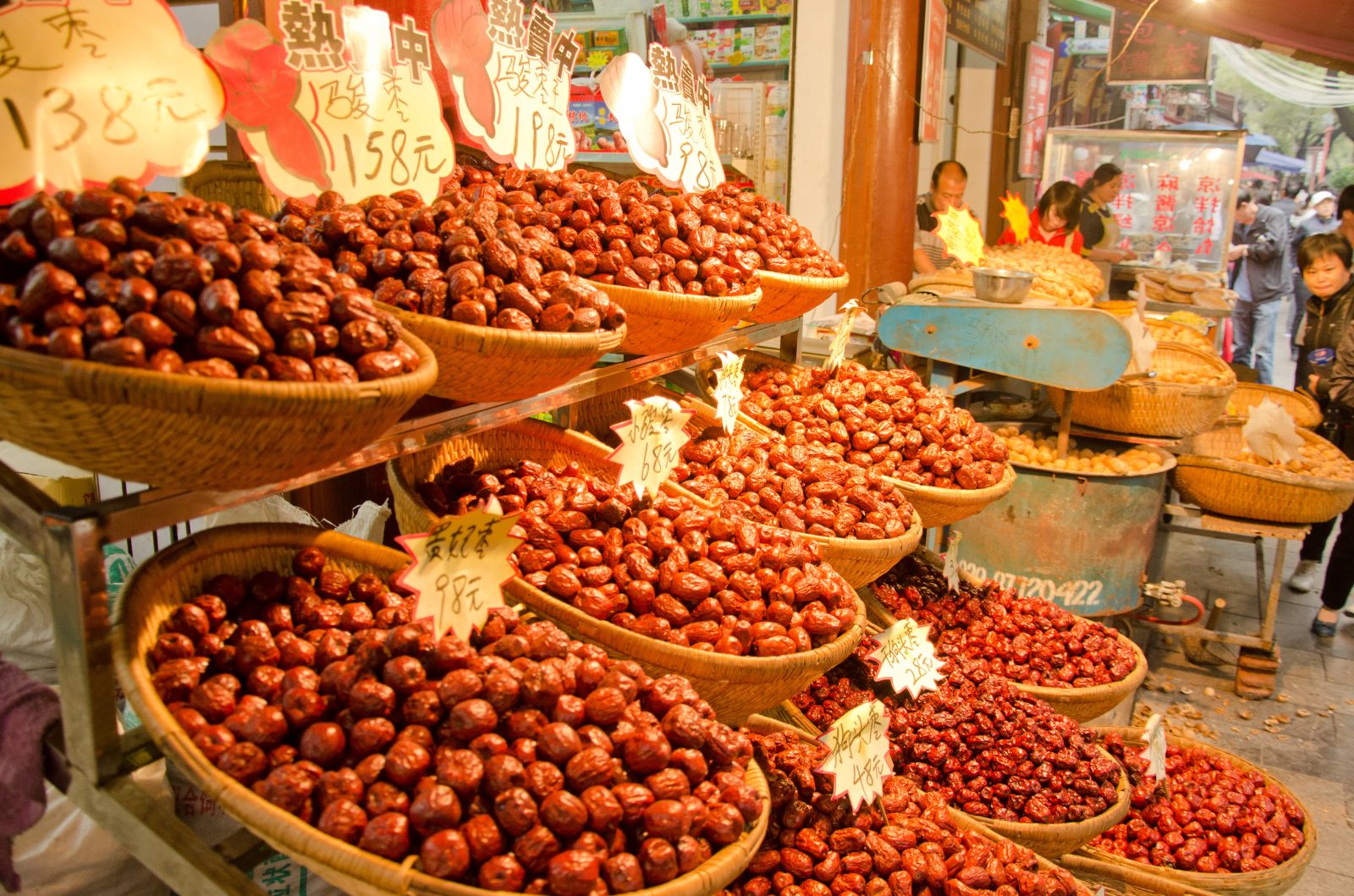Ziziphus jujuba
Credits
Article from Bean's Trees and Shrubs Hardy in the British Isles
Recommended citation
'Ziziphus jujuba' from the website Trees and Shrubs Online (treesandshrubsonline.
A small deciduous tree up to 30 ft high, with glabrous, spiny branches; spines in pairs, the longer one up to 11⁄4 in. long, straight, the shorter one decurved. Leaves alternate, oval, ovate to ovate-lanceolate, shallowly round-toothed, blunt or rounded at the apex, glabrous, or downy only on the veins beneath; three-veined at the base. Flowers less than 1⁄4 in. across, yellowish, borne two or three together on short stalks in the leaf-axils. Fruits fleshy and rather like small plums, roundish egg shaped, 1⁄2 to 1 in. long, dark red, or almost black when ripe.
Native originally of temperate Asia as far east as China, but now widely cultivated and naturalised outside its natural range, notably in the Mediterranean region, to which it was introduced in Roman times. Although cultivated off and on in this country since the 17th century it does not succeed in our climate – perhaps more from lack of adequate summer heat than actual tenderness. The fruits have a pleasant acid taste when fresh, but are more palatable when dried; they are commonly eaten in both states in the Mediterranean. Some Chinese cultivated varieties were introduced to the USA in 1906 for trial and the tree has been grown there commercially, though only to a limited extent. In earlier centuries the fruits were used medicinally to alleviate coughs and sore throat and were imported into this country in large quantities from Provence and the Iles d’Hyères.
var. inermis (Bunge) Rehd.
Synonyms
Z. vulgaris var. inermis Bunge
Z lotus (L.) Lam.
Synonyms
Rhamnus lotus L




